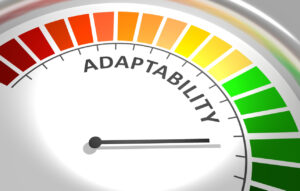The art of saying ‘no’ to media requests

There are times when your organization will have to turn down a media request.
Michael Perry, a vice president of external communications for the E.W. Scripps Company, noted that reporters typically understand that companies or individuals have to do what’s best for them. But the way an organization chooses to decline a request for comment or an interview can have an effect on not only that story but future stories down the road.
“Every organization has to do what’s best for them and their situation,” said Perry, who began his career in journalism. “But there is also a way to not comment that can show respect and professionalism and not damage relationships with media outlets.”
Deciding whether or not to respond
When possible, it’s best to offer a response to a reporter, Perry said. But there are times when that just can’t happen, especially when it comes to sensitive topics. In those situations, it’s important to consider two major questions:
- Is there value in sharing your side of a story or adding information that might not be known?
- Could an interview or comment hurt you or your company and how?
Perry noted that it’s vital the entire organization – investor relations, the legal department, human resources and the executive team – works in sync when deciding whether to respond.
“Thinking about how everything plays out later, including on social media, is important,” he said.
Another factor to consider is the organization’s past experiences with the media outlet and reporter. If the company has provided access to sources and information for years and there’s one time they can’t comment, that shouldn’t be an issue.
“I would have equity with you,” Perry said. “If we have never worked together, you might be more frustrated because you don’t know me.”
The dos and don’ts of saying ‘no’
Perry described responding to all media inquiries as “a must” – even if you can’t provide a comment.
His team always responds to calls and emails from reporters as soon as they can – whether they’re planning to issue an on-the-record response or not. If they can’t provide an answer, they let them know and, if possible, explain why.
“It’s a personnel matter, a personal matter, pending litigation, a privacy matter – those are legit reasons for not responding,” Perry said. “But at least offer an explanation as to why you’re not commenting.”
If you’re on the fence about taking part in a media request, it’s possible to respond to questions without really answering the question directly. Perry isn’t an advocate for that approach because he doesn’t think it’s particularly effective. It happens though, and there’s an art to it.
“Listen to every Sunday morning news program and every coach’s press conference,” Perry said. He noted that good reporters will likely continue to try to ask that question or word it differently.
A simple “no comment” is sometimes unavoidable, Perry said. But he would “rather have an article say I responded and couldn’t comment versus did not return calls or refused to respond to emails.”
Perry said doing that is never ideal, though, regardless of the circumstances. Reporters and the public may interpret that as the organization being dismissive or evasive, or both.
Success measured in relationship strength
Of course, there are times when a PR professional has to turn down a request for an interview or comment even if they want to respond, perhaps due to a deadline issue.
If that happens, it’s always nice to at least email the reporter and let them know why they can’t take part in the story, Perry said. It’s about treating them like professionals with a job to do – and that includes being respectful and accessible, within reason.
“A reporter wants to be treated respectfully and with the understanding they have a job to do that sometimes conflicts with what you would like,” Perry said.
Journalists and PR practitioners often have a collaborative relationship, but sometimes there is a fork in the road where each needs something different.
Perry emphasized that the most obvious gauge of whether or not to decline comment or an interview request is the quality of coverage and whether there was fair treatment. But he also stressed that another important barometer is how the situation affects working with a reporter or an entire newsroom down the road.
“I know it’s easier said than done, but reporters and media relations teams should have tremendous respect for each other’s roles and understand what’s in the best interest of one might not be in the best interest of the other at any given time. And that’s OK.
“Everyone has a job to do,” he added. “Communicate with respect and know that a long-term relationship has value.”
Casey Weldon is a reporter for PR Daily. Follow him on LinkedIn.








I found this article on how to decline media requests extremely informative and insightful! As a writer pursing a career in public relations, I am eager to learn more about the nuances of media relations. This article clearly shows how companies can politely decline media requests while still maintaining strong, professional relationships with media outlets. Additionally, Perry successfully demonstrates how PR professionals and journalists should respect each other’s roles, even when their interests differ. – Victoria Donato, Platform Magazine editor/writer